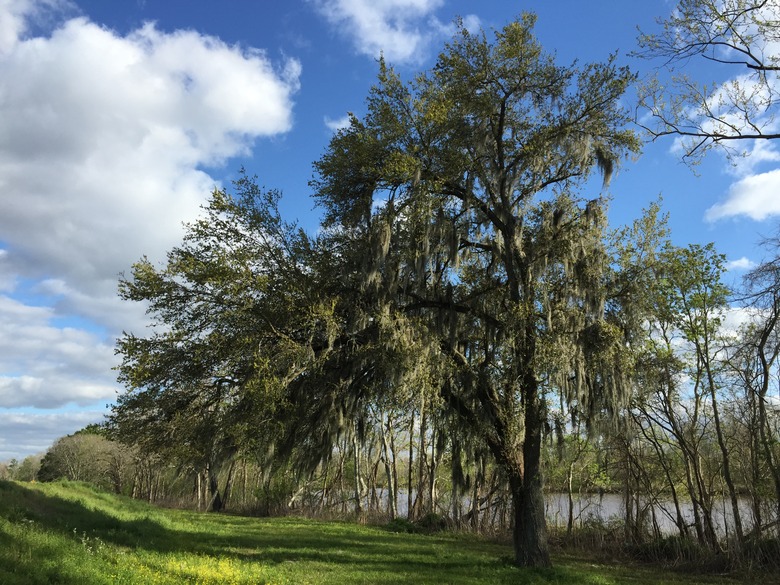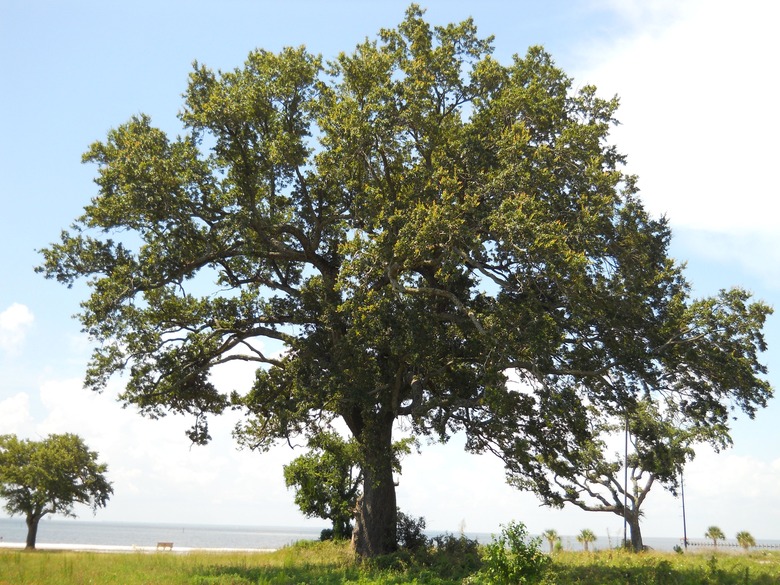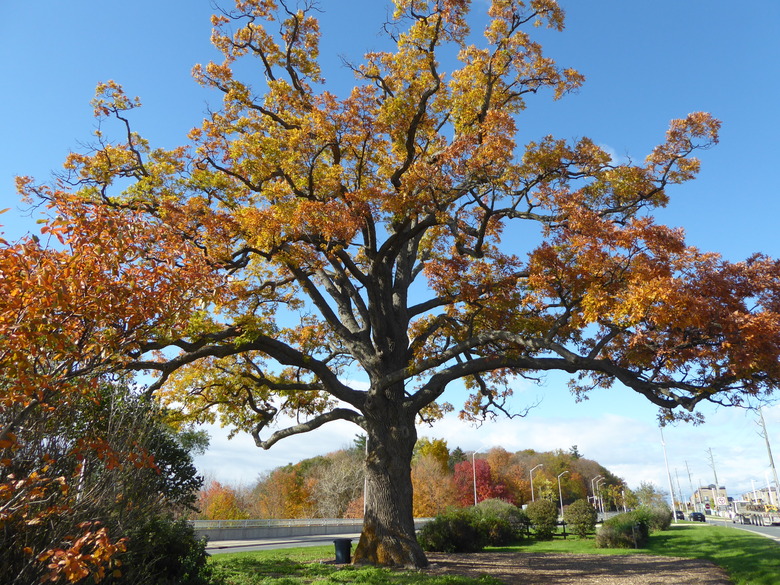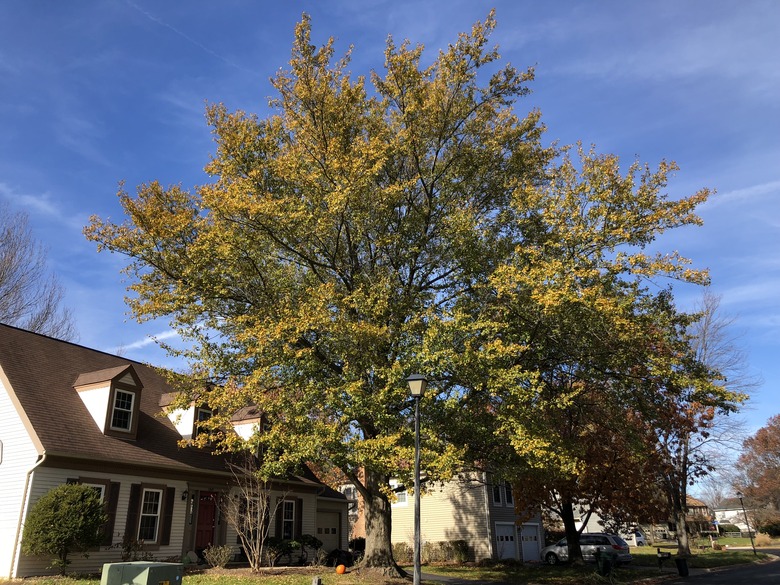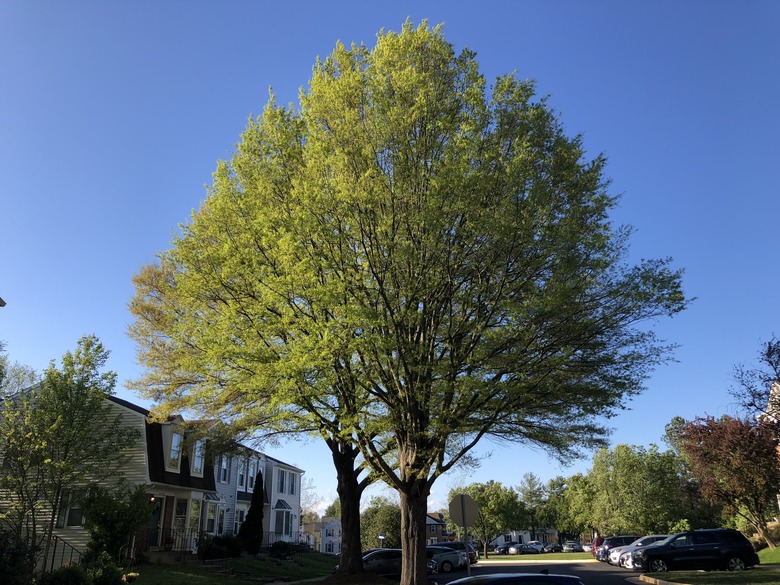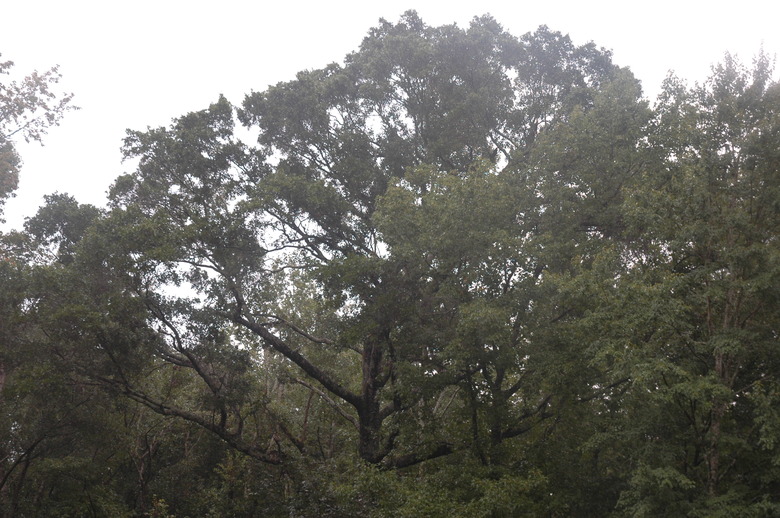How To Identify Oak Trees Of Florida
Living in a subtropical climate state with a penchant for attracting hurricanes, Florida homeowners wanting a sturdy oak (Quercus) tree in their landscaping must understand their hardiness zone, the space allotted for the tree's growth and their purpose. More than 19 varieties of oak tree grow in the various Florida zones, according to the University of Florida, some with far-reaching root systems that secure them to the ground and protect them from toppling down during heavy winds.
Oak Tree Characteristics
Don't expect to plant an oak tree and immediately bring out a blanket and the lemonade. Oaks grow relatively slowly, and their canopies vary according to the species. They live long lives, but one of the joys of an oak tree is watching it mature and form acorns.
They're also high maintenance, with leaves and fruit dropping annually. Some are evergreen, meaning they keep their leaves year-round, while others are deciduous, which means a rake is in order in the fall. However, the live oak (Quercus virginiana), which is evergreen, defies the definition by dropping old leaves at the same time that new ones are sprouting.
Oak trees are hardwood trees, producing fruit or nuts annually and dropping leaves in the fall. Almost half of the trees grown in America are hardwood. The most distinguishing feature of the various Florida oak trees is the shape of their leaves.
Tip
Do your research to find a Florida oak tree that suits your landscape. Some grow as tall as 100 feet and live for centuries, according to All About Gardening. Others will uproot your pavement, and some of those that drop fruit are attractive to wildlife.
Florida’s Plant Hardiness Zones
Florida, a gigantic panhandle surrounded by the Atlantic Ocean and the Gulf of Mexico, stretches over 700 miles. In Florida, the old saying is that, unlike most states, you can drive for 5 hours and still be in Florida.
In fact, the state, according to the USDA, contains six hardiness zones, reports the University of Florida Extension. Minimum temperatures range from 10 to 50°F. The oak trees that grow in south Florida differ from the oak trees in the Florida panhandle.
**Note:** You can use GardenGuides' hardiness map to find the USDA zone you live in.
Oak Trees in the Florida Panhandle
Let's take a look at some of the oak trees perfect for the Florida panhandle.
Live Oak: Twisting Trunk and Spanish Moss
The best shade tree in the Florida panhandle, the live oak (Quercus virginiana), can be identified by its twisting trunk that can grow to 16 feet wide and the Spanish moss that's often strewn on its branches.
With branches that stretch up to 80 feet wide that may need to be structurally secured as they grow, the live oak lives a long life (up to 250 years), is evergreen and likes full sun. Its acorns drop in the fall, and its tannins leach out, creating a mess on sidewalks and lawns, writes the Tallahassee Democrat. The good news is that the live oak resists both pests and decay.
White Oak: Slow Growing with a Smaller Spread
The white oak (Quercus alba) also thrives in the northern Florida climate. Getting its name from the white-ish bark, it grows tall but, unlike the live oak, its spread is not as wide.
Very slow growing, the white oak takes years to reach its full size. If you have wide open spaces, the white oak is a good choice. However, in tight surroundings, the root system of the white oak can lift pavements.
Water Oak and Laurel Oak: Shorter Lived with Delicate Root Systems
Two other oak species dominate the landscaping in the Florida panhandle: the water oak (Quercus nigra) and the laurel oak (Quercus hemispherica). They don't live as long as the other massive oaks (maybe 80 years) and attract decay. Don't plant them near a construction site as they rebel when their root systems are disturbed.
Oak Trees Grown in South Florida
As you drive south in Florida, the climate takes a not-so-subtle turn. Heat and humidity set in as temperatures from the Gulf of Mexico and the Atlantic Ocean bring with them an umbrella of heat.
Six varieties of oak are found in the southern portion of the state: the bluejack oak (Quercus incana), chinquapin oak (Quercus Muehlenbergii), the Southern live oak (Quercus virginiana), swamp laurel oak (Quercus laurifolia), turkey oak (Quercus laevis) and the willow oak (Quercus phellos), all of which can be distinguished by their leaf shape and the type of acorn they produce.
Willow Oak: A Towering Figure with Plenty of Acorns
The most popular oak in parks and near water is the willow oak. Often mistaken for a willow tree, the oak version grows up to 70 feet tall, with a canopy that stretches up to 50 feet wide. Differing from a willow tree, the oak also drops its now-yellow leaves in the fall, along with massive amounts of acorns.
Swamp Laurel Oak: Diamond-Shaped Leaves with Hairy Undergrowths
Unlike the laurel oak, the swamp laurel oak tree has diamond-shaped leaves and thrives in wet conditions. Short-lived, the swamp laurel grows fairly quickly and is a good shade tree. Another difference is that the leaves of the swamp laurel sprout a hairy undergrowth, while the laurel leaf does not.
Warning
Swamp laurel oaks are not suited for planting near sidewalks, as their twigs and limbs fall regularly, messing sidewalks and walkways and requiring frequent maintenance.
